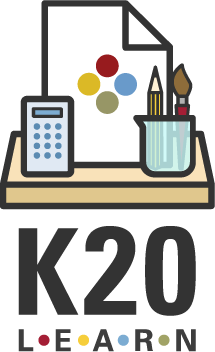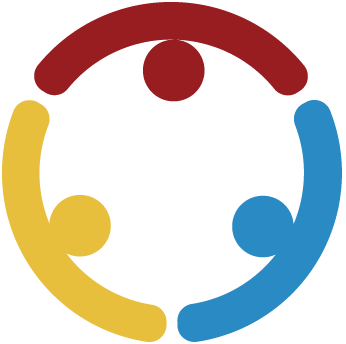Summary
In this activity, students will consider the number of hours they will spend at work over a lifetime. They will also research postsecondary education options that can prepare them for a career, considering average costs and return on investment based on average wages earned. This activity will help prepare students for 9th-grade campus visits and encourage them to consider the value of postsecondary education as an investment in themselves and their future.
Essential Question
Is postsecondary education worth the investment?
Objectives
Consider the long-term impact of career choices by examining the potential time spent at work over a lifetime.
Compare the costs and potential return on investment of postsecondary education (PSE) pathways.
Snapshot
Introduction
Students calculate the number of hours they will potentially work in their lifetime and connect this knowledge to the importance of choosing a job or career that they will enjoy.
Knowledge Building
Students compare the average annual cost, median earnings, and other key factors to evaluate the return on investment of attending a postsecondary education institution.
Wrap-Up
Students reflect on their learning and determine which school could be the best fit for them, explaining their rationale for the selection.
Materials List
Activity Slides (attached)
On the Clock handout (attached; one per pair; print one-sided)
College Scorecard handout (attached; one per student; print two-sided)
Student devices with internet access
Introduction
10 Minute(s)
Introduce the activity using the attached Activity Slides and share the essential question on slide 3.
Display slide 4 and ask students to share what kind of career or job they want for their future. Remind them that they have already thought about their interests, dreams, and goals—and what kind of job or career they want—during a previous campus visit.
Put students into pairs and transition to slide 5. Give each pair a copy of the attached On the Clock handout. Here students are asked to perform simple calculations with large numbers, so this is an appropriate time for them to use a calculator, like the one on their device.
As students work through the calculations, monitor progress and transition through slides 6–14 for students to check their work. When everyone is finished, ask students what they think the final number represents. Once students conclude that they just calculated the number of hours they will likely work in their lifetime, rhetorically ask the class if they think it matters what they choose to do for a living.
Display slide 15 and discuss the substantial amount of time we spend at work in our lifetime. Readdress the importance of choosing a job they can enjoy doing for that amount of time. Remind students that pursuing further education or training after high school will increase their job opportunities, increasing their chances of finding a job they will enjoy.
Then transition to slide 16 and share the learning objectives.
Knowledge Building
15 Minute(s)
Show slide 17 and introduce the activity. Tell students that they are to select three postsecondary institutions to compare and that the schools they choose to compare should fit their interests, preferences, and educational goals. Give each student a copy of the attached College Scorecard handout to record their findings.
Display slide 18 and instruct students to use their devices to visit CollegeScoreCard.ed.gov and select the “SEARCH” button.
Use slides 19–20 to direct students on how to navigate the website and find the information they need.
Use the filters along the top or left side to narrow down the number of options. If students are unsure of where to begin, have them use their zip code in the Location filter.
Select the “Add college to compare” checkmark icon for each school of interest. Encourage students to select at least one school from their state of residence.
After selecting three schools, click the “Ready to Compare” button located at the bottom of the screen.
Then select the “Compare 3 Colleges” button.
Now students have three schools to compare. Move to slide 21 and direct students to find the average annual cost, the median earnings, and two other interesting pieces of information, and then record their findings on their handout.
When students finish their comparisons, display slide 22. Have students use the Point of Most Significance strategy to identify the piece of information they found most important when comparing schools, and write their response on their handout. Ask for volunteers to share their responses with the class.
Wrap-Up
5 Minute(s)
Show slide 23 and tell students to reflect on the three postsecondary institutions they compared. Ask them to share which school they felt was their best fit and why.
Follow-Up Activities
Complete the 9th Grade Campus Visit: What’s Holding You Back? during your next campus visit.
Research Rationale
Adults often spend a significant portion of their time at work, sometimes as much as a third of their lives, so having meaningful work is crucial to their overall well-being, both at work and at home. Decent work means not only making money but having good hours, job security, safety, a short commute, fair pay, and benefits such as paid time off and healthcare. These things can add up to a sense of well-being about what you do and who you are (Solberg et al, 2021). Research shows a critical connection between experiences in education and the path to decent work (Duffy, R. D, et al 2022). In fact, “As the level of education increases, the probability of attaining decent work also increases” (Masdonati et al, 2022).
Postsecondary education can be a life-altering experience for students. College graduates tend to have more job satisfaction, jobs that offer a greater sense of accomplishment, more independence and opportunities for creativity, and more social interactions in their jobs than non-college graduates (Wolniak & Enberg, 2019). College graduation also increases the chances of employment. Over the last 20 years, the unemployment rate for college graduates has been approximately half of that of high school graduates (Bureau of Labor Statistics, 2022). College helps students develop skills that prepare them for careers in the tech-driven economy, including nonroutine, abstract skills that aid in problem-solving, multitasking, and creativity (Oreopoulos & Petronijevic, 2013).
Resources
Bureau of Labor Statistics, U.S. Department of Labor. (2022, March 9). High school graduates with no college had unemployment rate of 4.5 percent in February 2022. The Economics Daily. https://www.bls.gov/opub/ted/2022/high-school-graduates-with-no-college-had-unemployment-rate-of-4-5-percent-in-february-2022.htm
Duffy, R. D., Kim, H. J., Perez, G., Prieto, C. G., Torgal, C., & Kenny, M. E. (2022). Decent education as a precursor to decent work: An overview and construct conceptualization. Journal of Vocational Behavior, 138, 103771. https://doi.org/10.1016/j.jvb.2022.103771
K20 Center. (n.d.) On the Clock [Web app]. H5P. https://k20center.h5p.com/content/1292667078047233388
K20 Center. (n.d.). POMS: Point of most significance. Strategies. https://learn.k20center.ou.edu/strategy/101
Mas Kurin. (2024, March 30). Earn. [Illustration]. Noun Project. https://thenounproject.com/icon/earn-6770341/
Masdonati, J., Massoudi, K., Blustein, D. L., & Duffy, R. D. (2022). Moving Toward Decent Work: Application of the Psychology of Working Theory to the School-to-Work Transition. Journal of Career Development, 49(1), 41-59. https://doi.org/10.1177/0894845321991681
Oreopoulos, P. & Petronijevic, U. (2013). Making college worth it: A review of the returns to higher education. The Future of Children, 23(1), 41–65.
Solberg, V. S. H., Park, C. M., & Marsay, G. (2021). Designing quality programs that promote hope, purpose and future readiness among high need, high risk youth: Recommendations for shifting perspective and practice. Journal of Career Assessment, 29(2), 183-204. https://doi.org/10.1177/1069072720938646
Sunardi. (2025, May 17). College. [Illustration]. Noun Project. https://thenounproject.com/icon/college-7913633/
U.S. Department of Education. (n.d.). Search and compare colleges. College Scorecard. https://collegescorecard.ed.gov/
Wolniak, G. C. & Engberg, M. E. (2019). Do “high-impact” college experiences affect early career outcomes? The Review of Higher Education, 42(3), 825-858.


